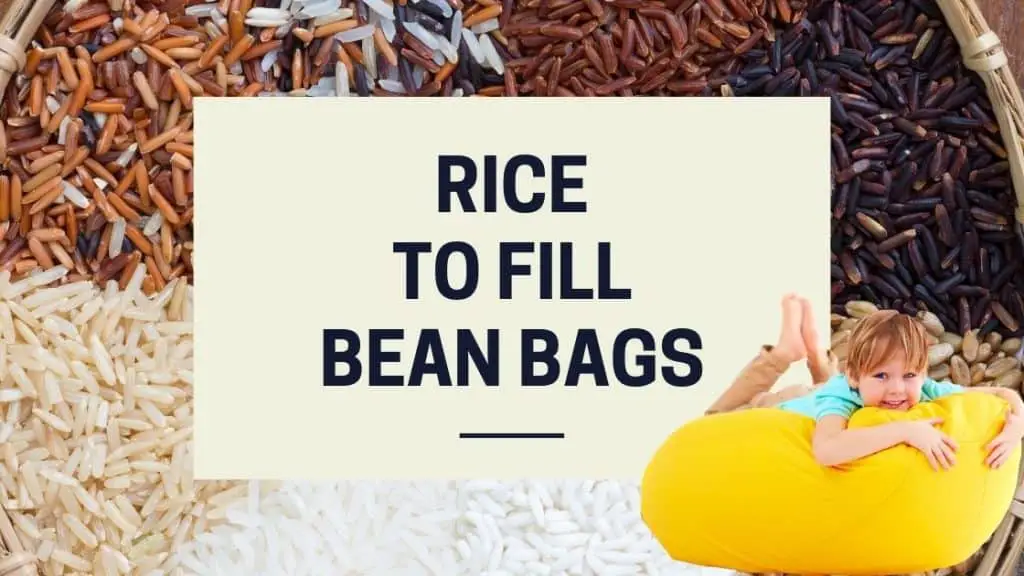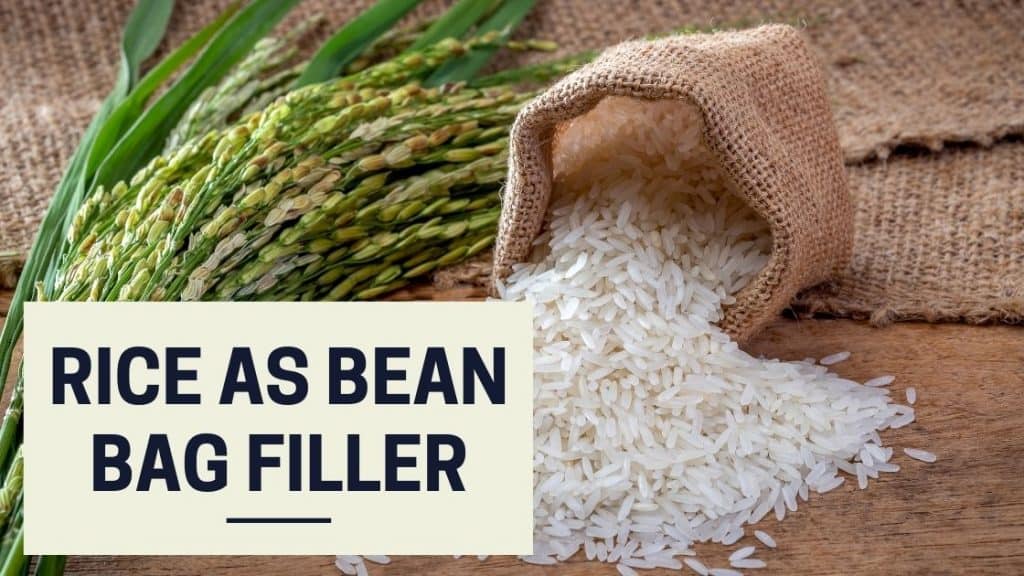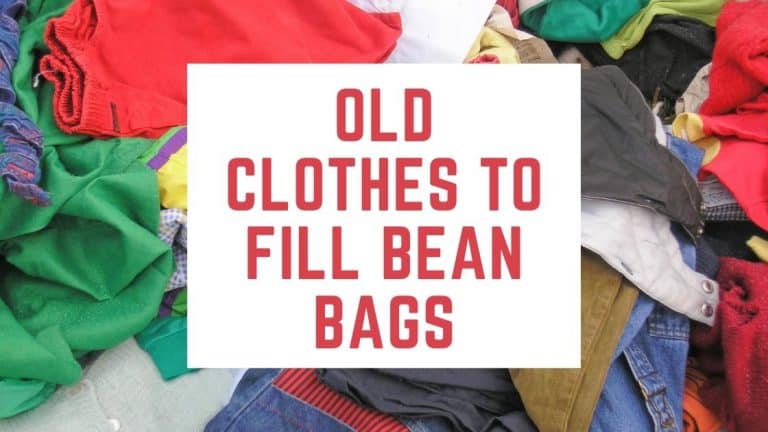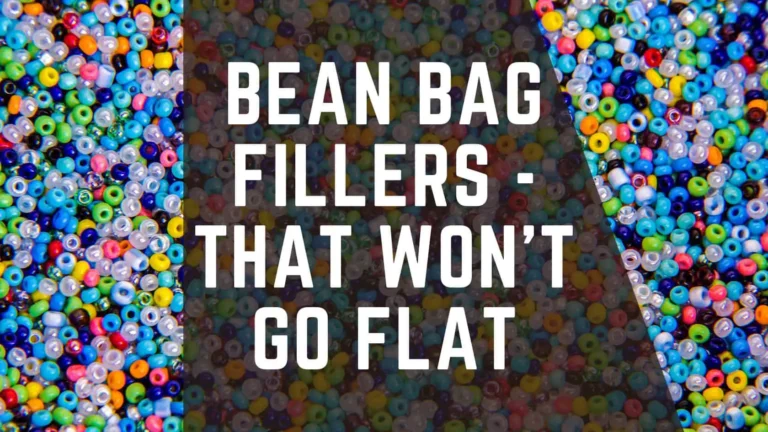Can Rice be Used in Bean Bags?
One of my friends recently filled his bean bag with rice. So I thought of research more on using rice to fill a bean bag to see whether it is a success or not.
Rice can be used to fill your bean bag at home. Rice is the most available filler type that can find in grocery stores. Moreover, rice is a bit cheaper than other bean bag filler alternatives. Therefore people use rice to fill small bean bags, especially toddler’s bean bags and pillows.
There is a massive demand for organic products in this century. Most people are trying to use environment-friendly products all over the world. This theory is also applicable to bean bags. Nowadays, people looking for environmentally friendly bean bags when they replace their old bean bags.
Hence, people search for natural bean bag fillers such as rice, sand, feed corn, dried lavender, beads to fill their bean bags.
The rice is a heavy-weight filler. Therefore small kids cannot move it easily. It is an added advantage. Because toddlers always try to move their furniture and, sometimes it may cause to occur accidents.
Therefore rice fillers are a pretty safe material. But, do not load it until overweight. Because then you may face difficulties when moving the bean bag.
In addition to that, rice is a natural filler type. Thus, it is the best bean bag filling alternative for expanded polystyrene fillers. Due to its eco-friendly properties, you can reduce the environmental risk to zero points by using rice as the filler.
However, if you are going to fill your bean bag using rice, you may need a massive load of rice because it is essential to fill at least 3/4 of the volume of the bean bag to maintain its unique properties.
Also, long-grain rice is better to fill bean bags. But Keep in mind to not stuff any rice in the microwave, though. Moreover, you can use rice and beans mixture to fill bean bag too.
Further, you have to select strong fabric for the bean bag cover. The thin materials can break easily when they in under pressure. Also, the bean bag cover seams should have enough strength to keep rice.
Thus, it would be best to consider these factors when preparing a bean bag using rice.

Table of Contents
- Prepare Rice to Fill a Bean Bag
- How to Fill a Bean Bag Using rice
- How Comfortable When We Fill a Bean Bag with Rice?
- Bean bag Filling Cost with Rice?
- Advantages of Using rice as Bean Bag Fillers
- Disadvantages of Using rice as Bean Bag Fillers
- Final Words
Prepare Rice to Fill a Bean Bag
Step 1: Purchase husk removed raw rice from the market
Step 2: Clean the rice
Rice may include some foreign matters such as rice husk, stones, and bugs. Hence, first, you should remove them.
If rice may contain insects, do not use them before treating them because they may destroy the rice fillers within a short period. Even, it is not healthy for bean bag consumers.
To clean the rice, you can follow these simple activities at home.
- Dry rice under the sunlight
- Use a small fan to remove rice husk and other low weight foreign substances
- If you need a small amount of rice, you can try the oven. But make sure to use low temperatures.
Step 3: Almost done. Now you can fill the bean bag using the rice.
How to Fill a Bean Bag Using rice
Step 1: Select lightweight rice
The bean bag weight depends on the size. But usually, they have pretty large volumes. Hence, you should select lightweight rice. If not, the total weight of the bean bag may be significantly high.
Step 2: Calculate the required rice weight
Before you purchase the rice, you should calculate the bean bag volume. Then you can buy the amount that is required to fill 3/4 of the bean bag. You can use a 1-litre bottle for this.
First, fill the bottle using the rice. Then check the weight using the balance.
Now you can multiply that weight by the required volume for bean bag filling.
For example, if your bean bag volume is 50 litres, you should fill around 38 litres using a filler. If 1 Kg rice is required to serve a one-litre bottle, you may need approximately 38 Kg of rice to fill the bean bag.
Step 3: Clean the rice
Rice may include some foreign matters. Hence, first, you should remove it.
Step 4: Create a funnel using cardboard or paper
If you already have a funnel at home, you can use it. If not, you can create it by bending the cardboard.
Step 5: Open the zip of bean bag and set the funnel in it
Step 6: Fill roughly 3/4 of bean bag with rice
Step 7: Close (zip) the bean bag.
Generally, rice is biodegradable. Hence, they will break into compost over time in the sack itself. So, it would be best if you refill the bag from time to time.

How Comfortable When We Fill a Bean Bag with Rice?
Generally, rice-filled bean bags conform to shape and minimize vibration. Therefore it gives a comfy feel to the consumer. Due to its fixed shape, it is suitable for consumers who have back-borne pain or disorders.
However, do not compare the artificial filler beads’ comfort with the natural fillers. Both of them give a different feel.
Bean bag Filling Cost with Rice?
The cost of rice fillers depends on the rice type and required weight. It depends on the volume of the bean bag.
As an example, assume that you need 30 Kg of rice to fill the bean bag. Also, the rice price is around $2 per kilogram. Then you have to spend $60 on rice as bean bag filler.
However, you can purchase some cheap rice if you are seeking budget filler. Moreover, if you buy rice online, you have to pay shipping and transport costs too.
If you use rice as a filler, you should choose an excellent fabric to cover it. Because if rice gets wet, it may have mould. Hence, waterproof, strong materials are best for rice-filling bean bags.
Advantages of Using rice as Bean Bag Fillers
Natural things are best than any synthetic material. Hence, rice is the best filler type that has 100% eco-friendly properties. Also, due to its bio-degradable property, it may decay over time. Therefore, you may need not worry about recycling of your bean bag or degrading methods.
Generally, it is heavy. Hence, toddlers cannot quickly move it. Therefore, It reduces accidents. In addition to that, rice have no static effect. If your filler spill out accidentally, it may not damage you and your electric equipment. It is a great advantage.
Further, the small kids always try to eat foreign materials. Also, there are some cases of inhaling expanded polystyrene beads. But in rice filling, your kid may not experience this type of bad experience.
Additionally, its fixed and flexible shape is suitable for people who have back-borne pains.
Disadvantages of Using rice as Bean Bag Fillers
Due to the natural filler type, rodents, bugs, and other insects may attract to it. Moreover, they can damage the fabric while trying to eat. Also, the fabric and rice fillers may get dirty with their faecal matter.
Therefore, natural fillers like rice may create an unpleasant environment around the bean bag. Moreover, their faecal matter is not good for human health.
Further, mold can produce in the bean bag if rice fillers get wet. Thus, wet fillers cannot use for an extended period because they emit a terrible smell.
Additionally, the heavy-weight and rough texture may damage the seams of bean bag fabric.
Final Words
Rice is the best eco-friendly filler that can use for bean bags. Thus, it is good for consumer health, especially for toddlers. If you maintain it properly, you can use it for years without any issue.
I believe now you have a better understanding of it. Share your knowledge with friends and family members to make a green world with eco-friendly bean bags.




